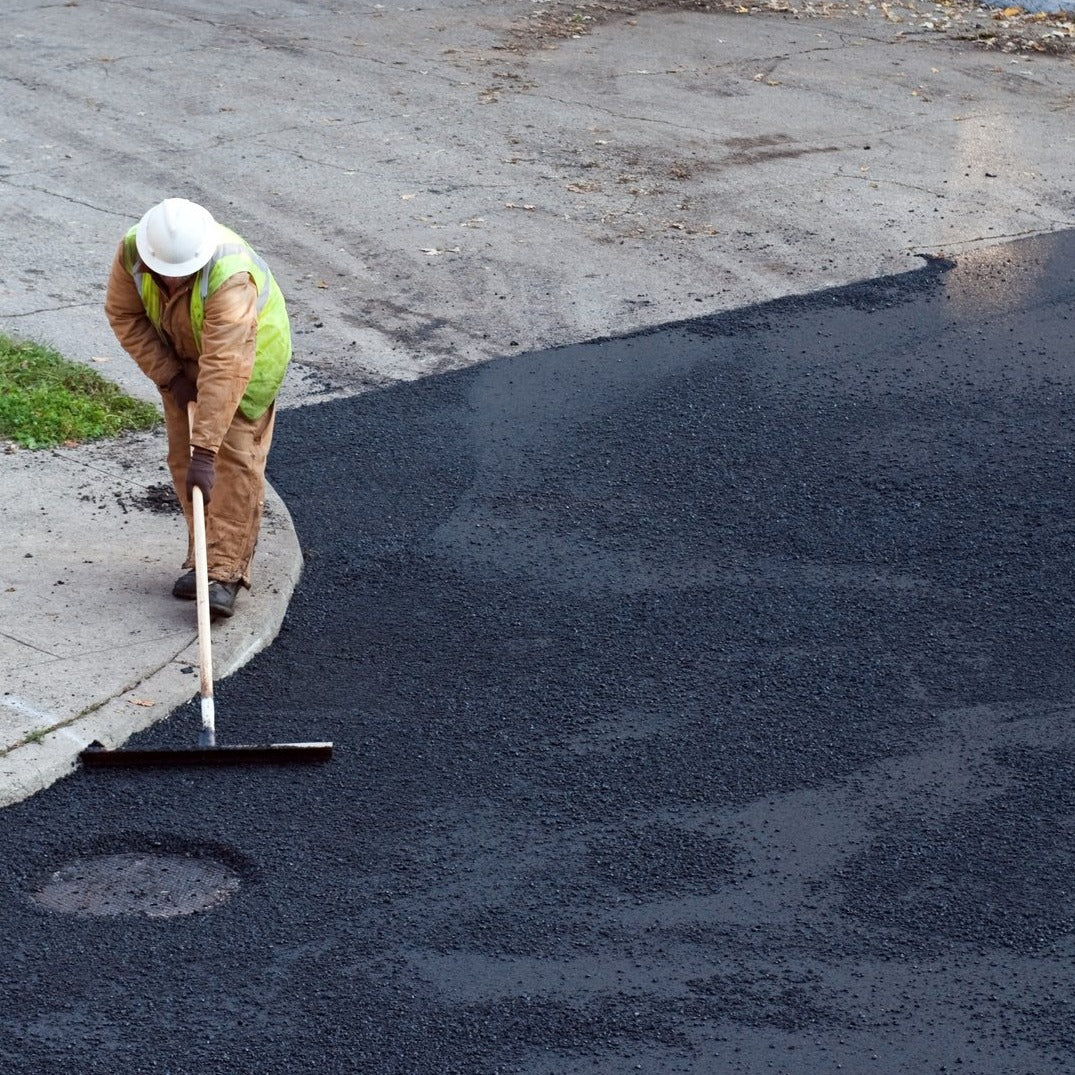Hot Mix Asphalt Paving: Your Entrance to Premium Angled Parking Solutions
Hot Mix Asphalt Paving: Your Entrance to Premium Angled Parking Solutions
Blog Article
Opening the Tricks of Warm Mix Asphalt Modern Technology
Exploring the depths of hot mix asphalt technology uncovers a world where accurate formulas and precise processes assemble to shape our roads and facilities. The combination of binders, aggregates, and fillers isn't simply a construction task yet a critical orchestration of durability and effectiveness. As we peer right into the detailed dancing of elements, a tapestry of resilience and sustainability unfolds. But what exists underneath this surface of asphaltic mastery, and what keys wait to be introduced in the realm of paving innovations?
Relevance of Hot Mix Asphalt
Warm Mix Asphalt plays a vital role in modern-day infrastructure growth due to its toughness and cost-effectiveness. As the most frequently used leading product for roads, freeways, and car park, Warm Mix Asphalt provides a range of advantages that contribute to its significance in building and construction jobs. One crucial benefit is its capability to withstand rush hour tons and extreme climate condition, offering a lasting and trusted surface for transport networks. Additionally, Hot Mix Asphalt is economical in both first construction and long-lasting maintenance, making it a favored selection for many infrastructure jobs.
The longevity of Warm Mix Asphalt stems from its structure, which includes accumulations, binder, and filler materials that are meticulously chosen and mixed to fulfill particular performance demands. In general, the importance of Warm Mix Asphalt in infrastructure growth can not be understated, as it proceeds to be a foundation of modern-day building and construction practices.
Elements of Asphalt Mixes
The structure of asphalt blends includes meticulously chosen accumulations, binder, and filler materials that are critical for accomplishing details performance needs. Aggregates are the main component of asphalt mixes, giving strength and security. These aggregates can be natural, such as crushed rock or crushed rock, or synthetic, like recycled products from old pavements. The binder, commonly bitumen or asphalt cement, holds the accumulations together and offers adaptability and resilience to the mix. The option of the binder is crucial as it directly affects the mix's performance in various weather. Fillers, such as moisturized lime or Rose city cement, are utilized to boost the mix's workability and aging resistance. Angled Parking.
The mix and percentage of these components play a significant function in figuring out the high quality and efficiency of the asphalt mix. Engineers very carefully create the mix to fulfill details needs, taking into consideration variables like website traffic quantity, environment problems, and pavement life expectancy. Proper selection and balancing of aggregates, binder, and fillers are important for producing resilient, resilient asphalt pavements.
Mixing and Manufacturing Techniques

As soon as the accumulations are picked, the binder, frequently asphalt cement, is included in bind the materials together. The binder's quality and quantity considerably affect the mix's flexibility, resistance, and strength to ecological variables. In addition, fillers like moisturized lime or Rose city concrete might be included to improve certain attributes of the asphalt mix, such as its workability or wetness resistance.
During manufacturing, the accumulations and binder are warmed, normally between 250-325 ° F(121-163 ° C ), to help with mixing and ensure correct layer of the accumulations. The blending process must be thorough to attain a homogeneous mixture that advertises the wanted browse around these guys performance characteristics of the asphalt. Numerous methods, such as batch blending or drum mixing, are used to accomplish high-quality and regular asphalt mixes for building and construction jobs.
Elements Influencing Asphalt Efficiency
Aspects affecting asphalt performance include an array of variables that impact the sturdiness, long life, and overall high quality of asphalt sidewalks. One vital element is the high quality of products made use of in the asphalt mix.

Design considerations, such as pavement density and drain, are crucial in ensuring the long-term performance of the asphalt pavement. By thoroughly thinking about these factors, contractors and engineers can maximize asphalt efficiency and improve the service life of pavements.
Lasting Practices in Asphalt Modern Technology

Additionally, the advancement of warm-mix asphalt (WMA) innovations has gained grip over check here the last few years. WMA enables for the production and positioning of asphalt blends at lower temperatures contrasted to standard hot-mix asphalt, leading to decreased energy intake and greenhouse gas discharges. The usage of porous asphalt blends can assist mitigate stormwater overflow issues by permitting water to infiltrate via the pavement and right into the ground, promoting all-natural water filtering and reenergize processes. By implementing these lasting practices, the asphalt market can add to developing a more ecologically friendly and durable infrastructure network.
Conclusion
To conclude, warm mix asphalt modern technology plays a crucial role in contemporary facilities growth due to its toughness and cost-effectiveness. By carefully balancing components, employing appropriate mixing methods, and thinking about numerous variables, designers can develop high-quality asphalt mixes that withstand rush hour loads and severe weather condition conditions. Accepting lasting techniques, such as making use of recycled products and warm-mix modern technologies, even more enhances the ecological kindness of asphalt innovation.
Mixing and manufacturing strategies in hot mix asphalt technology involve the specific mix and processing of accumulations, binder, and fillers to produce a high-performance and resilient asphalt mix.Factors affecting asphalt performance encompass an array of variables that affect the resilience, long life, and general quality of asphalt sidewalks. Sustainable practices in asphalt modern technology encompass numerous efforts aimed at minimizing the environmental influence of asphalt production and paving procedures. By integrating reclaimed asphalt sidewalk (RAP) and recycled asphalt shingles (RAS) right into new asphalt blends, the sector can substantially decrease the intake of raw materials and power, while also reducing landfill waste.
WMA enables for the manufacturing and placement of asphalt blends at lower temperature levels compared to standard hot-mix asphalt, resulting in reduced energy intake and greenhouse gas emissions.
Report this page